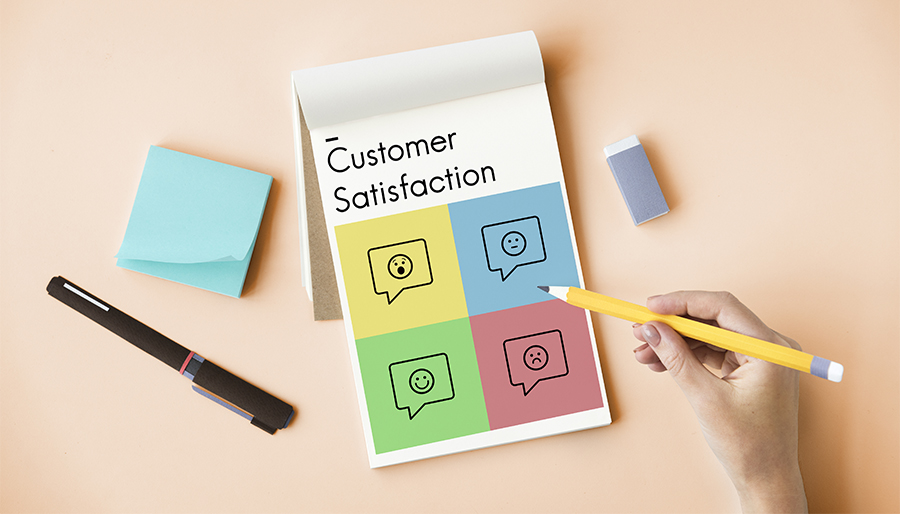Critical CX do’s and don’ts that retail businesses could remember
By N Jayalakshmi | March 24, 2022
Mckinsey’s new report titled ‘Six customer experience pitfalls to avoid to successfully enhance customer experience’ reiterates the fact that customer experience is not just a front end process, but a long term strategic game changer that can reflect in a retail business’s balance sheet.

“To successfully enhance customer experience, companies need to build the right organizational capabilities and culture to plan, execute, and sustain the transformation,” says a Mckinsey report titled ‘Six customer experience pitfalls to avoid to successfully enhance customer experience’. At a time when brick and mortar retail is bouncing back post pandemic with heightened customer /shopper expectations, customer experience could well be the game changer.
Here’s a quick look at some lessons that the Mckinsey report offers with case studies:
1. CX is as much about business objectives: The report quite highlights the fact that customer experience transformations are often not linked with strategic business results and priorities, such as revenue growth and thus fail to make a difference.
Case study: A multinational bank set about improving customer-satisfaction scores on surveys by 10 percent by making small changes in services like free add-on products just before the surveys. But due to lack of focus on deepening relationships, the scores beyond going up for a year, had no impact on the bank’s market share or profits.
Lesson: It is important to effectively communicate to teams about how how improved customer satisfaction could increase the bank’s share of wallet, and improve employee engagement on a long term basis.
2. Needs a focused approach: One of the common mistakes made by business leaders, as the report points out, is “trying to fix everything at once” without focus which can only result in incremental change, at best.
Case study : A CX leader at a global telecommunications company had developed a portfolio of more than 300 initiatives that spanned multiple business units. Even after more than 50 agile teams reportedly worked on these initiatives simultaneously for nearly two years, there was minimal customer and business impact.
Lesson: It’s important to redesign customer onboarding journey in order to create meaningful customer and business outcomes. This also means having a top view, and looking at the customer journey in its entirety rather than looking at individual touchpoints.
3. CX needs creativity too: “Many companies struggle to systematically come up with bold, innovative solutions for customer challenges and to bolster a culture that encourages such creative thinking. It’s not uncommon for a business to reject new ideas because “We have tried that before,” or “That’s not how we do things,” or “We’ll never get the funding for that.” That kind of thinking causes employees to limit their creativity to safe, incremental improvements. To truly transform, a different way of thinking is needed,” says McKinsey.
Case study: A home-security company dedicated a dozen team members to redesign the sales journey. A number of those team members came up with the single goal of giving drones to home auditors to speed up home audit process. They were so caught up with the idea that there was no room for other ideas. Soon enough the dominant members of the team moved quickly to deploy the drones. But the result was that there was no significant shift in customer experience after the changes and what’s worse two months later, a competitor launched a solution that removed the need for a home audit altogether.
Lesson: Transformational thinking requires focus on creating a culture of unconstrained innovation and building the right employee capabilities. This means creating time and space to generate ideas without judgment or constraint on business feasibility, says the report.
4. Seeking customer feedback and acting on it is important: A common mistake that companies often make is not seeking feedback - out of a desire to save time - which can have damaging consequences.
Case study : A city-government entity was excited to offer e-learning to low-income community members seeking to reskill for new jobs in high-need areas, such as coding. The project manager wanted to develop a highly interactive, video based educational experience after identifying vendors with the most cutting-edge technologies and set about doing it too. The team conducted early user testing but worried losing time piloting a simple version of the content and instead wanted to focus on the planned learning experience. Three months later, the e-learning was launched with all its bells and whistles, but the project manager was disappointed to see that fewer than 10 percent of users completed the course and those who were disappointed with the lack of interactivity with other users.
Lesson: An early pilot would have helped incorporating important user reviews and improve the experience.
5. CX needs a cross-functional mindset: Finally, organisations, particularly those in the customer facing business, could do well to remember that it’s not just the CX team that drives customer experience, nor is it just the customerfacing front line. Even those who don’t face the customers can impact a business’s customer experience.
Case study: A high-end hotel chain in a resort town was seeing decline in business due to increased competition after a consolidation of major luxuryhotel brands. The company planned to improve customer experience by offering better promotions and by training reception staff to greet customers by name. While this resulted in short-term increase in bookings and better reviews, the results did not persist over time. The management soon realized that they needed to involve the entire hotel workforce and it showed in the long term result . The hotel created a unique customer experience that focused on providing a unique, locally inspired experience. The leadership also created a measurement system and central analytics team to help every employee understand how their actions affected the organization’s customer, financial, and operational goals.
Lesson: Truly customer-centric companies make sure every employee at every level of the organization understands the role they play in maximizing the customer’s experience.









Comments